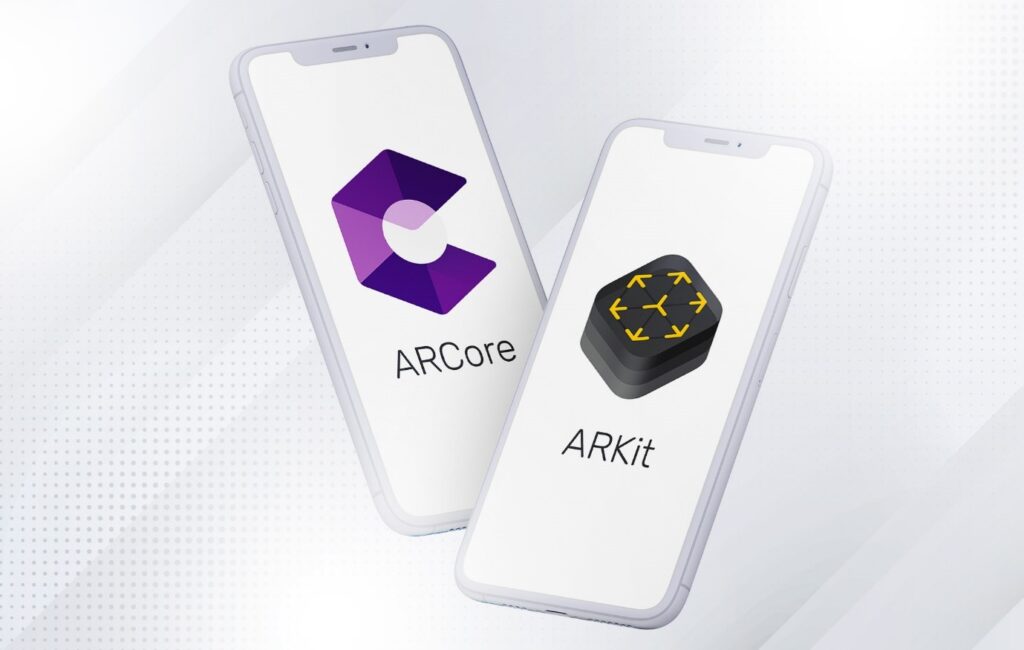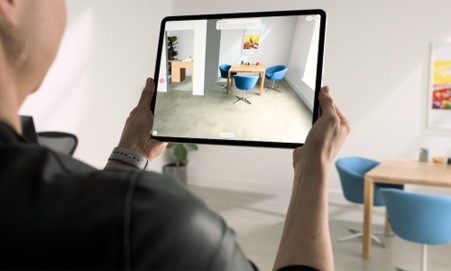XR Digital
At XR Digital, we blend creativity, technology, and strategy to deliver unparalleled digital solutions. Explore the possibilities with us as we push the boundaries of innovation and transform your vision into reality.

In the ever-evolving landscape of technology, Augmented Reality (AR) stands out as a revolutionary concept that blurs the lines between the digital and physical worlds. AR has found its way into various industries, from gaming and entertainment to education and healthcare. One of the key players in the realm of AR development is ARKit, a framework introduced by Apple.
Before delving into the intricacies of ARKit, it’s crucial to understand the problem statement that led to the development of ARKit. Traditional applications of Augmented Reality faced challenges in terms of accessibility, development complexity, and user experience. Creating AR experiences required specialized knowledge, making it a niche field accessible only to a limited number of developers. Additionally, existing AR frameworks lacked the robustness needed to seamlessly integrate AR into everyday applications.
As technology advanced, there was a growing demand for AR experiences that could be easily developed, widely accessible, and integrated into various applications. This prompted the need for a comprehensive AR framework that could cater to the diverse requirements of developers and users alike.
This article delves into the depths of ARKit, exploring its origins, capabilities, and the impact it has had on the AR ecosystem.

In response to the challenges posed by traditional AR development, Apple introduced ARKit at its Worldwide Developers Conference (WWDC) in June 2017. ARKit, a framework for building Augmented Reality experiences on iOS devices, marked a significant leap forward in making AR accessible to a broader audience.
ARKit aimed to democratize AR development by providing a framework that was easy to use, even for developers without extensive AR expertise. This meant lowering the barriers to entry and allowing a more extensive pool of developers to create AR applications.
ARKit was designed to seamlessly integrate with iOS, taking advantage of the powerful hardware and software capabilities of Apple devices. This integration ensured a consistent and optimized AR experience across a range of iOS devices.
One of the primary goals of ARKit was to enable AR experiences that could interact with the real world. This included recognizing surfaces, understanding the environment, and placing virtual objects in a way that felt natural to users.

ARKit operates on a set of principles and technologies that enable the creation of immersive AR experiences. To comprehend its functionality, it’s essential to explore the technical aspects that form the foundation of ARKit. The integration of ARKit demands a thoughtful approach to user experience (UX) and user interface (UI) design. Creating intuitive AR interfaces is crucial for user engagement and satisfaction.
ARKit utilizes VIO to track the device’s motion relative to the world. By combining data from the device’s camera with CoreMotion data, ARKit can accurately understand the device’s position and orientation in real-time. This is crucial for anchoring virtual objects in the physical environment.
ARKit employs advanced computer vision algorithms for scene understanding. This involves recognizing and understanding the geometry of the environment, including horizontal and vertical surfaces. Detection of features like planes allows ARKit to place virtual content in a way that aligns with the real-world surfaces.
Realistic AR experiences require consideration of lighting conditions. ARKit dynamically adjusts the lighting of virtual objects based on the ambient lighting in the real world. This creates a more immersive and visually consistent AR environment.
ARKit supports ARML, a markup language that facilitates the description of AR content. This allows developers to define the behavior and appearance of virtual objects within an AR scene, providing a standardized way to create interactive AR content.

Since its initial release, ARKit has undergone several iterations, each introducing new features and enhancements. Understanding the evolution of ARKit provides insights into how Apple has addressed challenges and embraced opportunities in the rapidly advancing field of AR.
The first version of ARKit laid the groundwork for AR development on iOS. It introduced basic features like surface detection, tracking, and basic interaction with the real world. While a significant leap forward, it was just the beginning of Apple’s journey into AR.
With ARKit 2.0, Apple introduced collaborative experiences, allowing multiple users to interact with the same AR environment. This opened up possibilities for shared gaming experiences, collaborative design, and more. Additionally, ARKit 2.0 brought persistent AR experiences, enabling developers to save and reload AR content in specific locations.
ARKit 3.0 focused on enhancing the realism of AR experiences. It introduced features like People Occlusion, which allows virtual objects to appear behind or in front of people in the real world. Motion Capture and multiple face tracking also became part of ARKit 3.0, enabling more sophisticated and interactive AR applications.
The latest iteration of ARKit, version 4.0, continued to push the boundaries of AR development. It introduced Location Anchors, enabling developers to place AR content at specific geographic coordinates. This opened up possibilities for location-based AR experiences, such as virtual tours and navigation assistance.

The versatility of ARKit has led to its widespread adoption across various industries. Understanding how ARKit is applied in different sectors provides a comprehensive view of its impact on technology and user experiences.
ARKit has revolutionized the gaming industry by bringing immersive AR experiences to mobile games. Games like Pokémon GO demonstrated the potential of combining virtual elements with the real world. With features like motion tracking and surface detection, ARKit provides game developers with tools to create captivating and interactive gaming experiences.
In the retail sector, ARKit has been employed to enhance the online shopping experience. Virtual try-on features allow users to visualize products in their real-world environment before making a purchase. This not only improves the shopping experience but also reduces the likelihood of returns.
ARKit has found applications in education, making learning more engaging and interactive. Educational apps can use AR to provide visualizations of complex concepts, allowing students to interact with 3D models and simulations. This hands-on approach enhances understanding and retention of information.
In healthcare, ARKit is used for medical training, surgery planning, and patient education. Surgeons can use AR to visualize anatomy in 3D before performing surgeries, enhancing precision and reducing risks. ARKit’s capabilities in scene understanding also aid in creating AR-assisted navigation systems within medical facilities.
Architects and designers leverage ARKit to visualize and present their projects in a real-world context. AR allows for the placement of virtual building models on construction sites, providing stakeholders with a realistic preview of the final structure. This aids in decision-making and communication within the design and construction process.

While ARKit has undoubtedly made significant strides in advancing AR development, it is not without its challenges. Understanding these challenges and contemplating the future directions of ARKit sheds light on the ongoing evolution of augmented reality.
ARKit’s performance is closely tied to the hardware capabilities of iOS devices. While newer devices boast impressive processing power, older models may struggle to deliver a seamless AR experience. Future iterations of ARKit will likely need to strike a balance between pushing technological boundaries and ensuring compatibility with a wide range of devices.
AR applications often require access to the device’s camera and sensors, raising concerns about user privacy. Striking a balance between providing robust AR experiences and respecting user privacy will be a crucial challenge for the future development of ARKit.
As the AR landscape continues to grow, there is a need for standardized formats for AR content. This includes a common framework for describing and sharing AR experiences. Standardization would facilitate interoperability between different AR platforms and devices, creating a more cohesive AR ecosystem.
The concept of an AR Cloud, a shared digital layer that overlays the physical world, is gaining traction. Future iterations of ARKit may explore tighter integration with AR Cloud technologies, enabling more seamless and persistent AR experiences across different locations and devices.

ARKit and ARCore are both augmented reality frameworks developed by major technology companies—ARKit by Apple and ARCore by Google.
Developed by Apple, ARKit is a framework designed for iOS devices. It provides a set of tools and technologies for developers to create AR applications that seamlessly integrate with iPhones and iPads.
Developed by Google, ARCore is an AR platform designed for Android devices. Similar to ARKit, ARCore allows developers to build AR applications for a wide range of Android smartphones and tablets, enabling immersive AR experiences.

The comparison between ARKit and ARCore depends on specific criteria, including the preferences of developers and the devices used. Both frameworks have evolved over time, introducing new features and improvements.
Ultimately, the choice between ARKit and ARCore often depends on the target platform (iOS or Android) and the specific needs of the developer or project.

In conclusion, ARKit has played a pivotal role in democratizing AR development and bringing augmented reality into the mainstream. From its humble beginnings to the latest advancements, ARKit has evolved to meet the growing demands of developers and users across various industries. As technology continues to advance, ARKit will likely continue to push the boundaries of what is possible in the realm of augmented reality.
Understanding the problem statement that led to the creation of ARKit, the technical intricacies of its operation, its evolution over different versions, and its diverse applications provides a comprehensive view of the impact ARKit has had on the world of technology. While challenges persist, the future of ARKit holds exciting possibilities, paving the way for even more immersive and widespread adoption of augmented reality.

In the dynamic landscape of immersive technologies, ARKit emerges as a pivotal player, much like XR Digital’s commitment to shaping user-centric and innovative digital experiences, ARKit, introduced by Apple, revolutionizes Augmented Reality (AR) by bridging the gap between the digital and physical worlds.
As XR Digital navigates the realm of extended reality, XR Digital’s mission – democratizing access to AR development and seamlessly integrating AR experiences into everyday applications. XR Digital’s exploration of cutting-edge technologies, including AR, to create immersive and visually consistent digital environments. XR Digital contributes to the evolution of augmented reality. XR Digital’s vision is fostering widespread adoption and pushing the boundaries of immersive digital experiences. Top of Form
Yes, ARKit is specifically designed for iOS devices. It is an Apple framework that integrates seamlessly with iOS, taking advantage of the hardware and software capabilities of iPhones and iPads. Developers can use ARKit to build AR applications that run exclusively on Apple’s iOS platform.
ARKit primarily uses Swift and Objective-C as the programming languages for iOS app development. Swift is Apple’s preferred programming language, known for its readability, performance, and safety features. Developers can leverage Swift along with ARKit to create AR experiences, although Objective-C, an older programming language, is also supported.
Yes, ARKit is free for developers to use. It is included in Apple’s iOS development tools and resources, allowing developers to integrate ARKit into their applications without incurring additional costs for using the framework itself.
“ARKit iPhone” refers to the integration of ARKit, Apple’s augmented reality framework, into iPhones. iPhones that support ARKit are equipped with the necessary hardware, including cameras and sensors, to enable augmented reality experiences.
At XR Digital, we blend creativity, technology, and strategy to deliver unparalleled digital solutions. Explore the possibilities with us as we push the boundaries of innovation and transform your vision into reality.